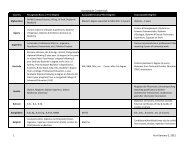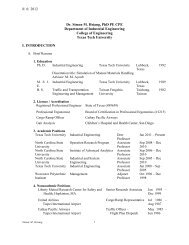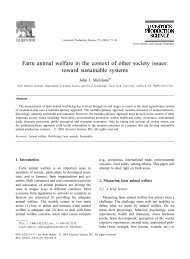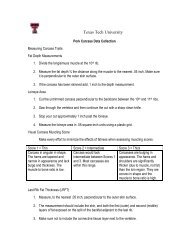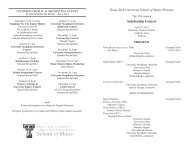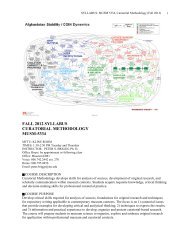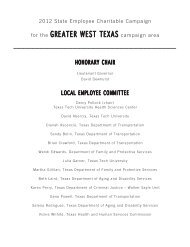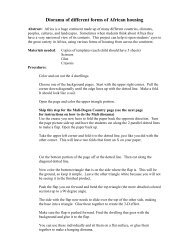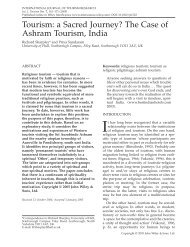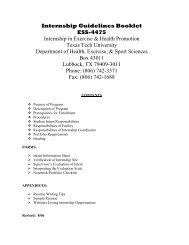Development of Tour Uriely 2005
Development of Tour Uriely 2005
Development of Tour Uriely 2005
You also want an ePaper? Increase the reach of your titles
YUMPU automatically turns print PDFs into web optimized ePapers that Google loves.
NATAN URIELY 205<br />
tion was challenged by Cohen who proposed that ‘‘different kinds <strong>of</strong><br />
people may desire different modes <strong>of</strong> tourist experiences’’<br />
(1979:180). In line with this premise, Cohen developed a typology <strong>of</strong><br />
five modes <strong>of</strong> tourist experiences that span between the quest for mere<br />
pleasure on one end and the search for meanings on the other. His notion<br />
<strong>of</strong> plurality is also the premise <strong>of</strong> other categorizations, aiming to<br />
capture the existing variety in the practice <strong>of</strong> tourism (Cohen 1972;<br />
Krippendorf 1984; Pearce 1982; Plog 1977; Smith 1978).<br />
The emergence <strong>of</strong> typologies marks one step in the shift from essentialist<br />
and unifying depictions <strong>of</strong> the tourist experience as a general<br />
type toward an approach that stresses its diverse and plural characteristics.<br />
Another step in this direction is carried out in recent studies,<br />
which deconstruct well-established typologies by stressing the diversity<br />
within each <strong>of</strong> the existing categories in these typologies. This trend<br />
could be exemplified with regard to the four-fold tourist typology (drifter,<br />
explorer, individual mass, and organized mass) which construct<br />
the differentiation between noninstitutionalized and institutionalized<br />
tourists, respectively (Cohen 1972). With respect to the latter, the existing<br />
variety <strong>of</strong> experiences within the category <strong>of</strong> individual mass tourist<br />
is revealed in a recent study <strong>of</strong> British holidaymakers in Chalkidiki, in<br />
the region <strong>of</strong> Northern Greece (Wickens 2002). The study indicates<br />
that these holidaymakers are akin to the individual mass tourist type,<br />
but they are characterized by highly diversified patterns <strong>of</strong> interests<br />
and activities. Accordingly, they are further classified into five subtypes<br />
in accordance with dominant motivations: placing a strong emphasis<br />
on the local culture, searching for sensual and hedonistic pleasures,<br />
wishing for a romantic experience, questing for sunshine and hot climate,<br />
and enjoying the familiarity provided in a destination to which<br />
they return on an annual basis (Wickens 2002). Consequently, Wickens<br />
suggests that ‘‘...future studies should focus on multiple types <strong>of</strong> tourism,<br />
by identifying and examining the different micro-types, which are<br />
specific to the study’s particular situation’’ (2002:849).<br />
While Wickens’ study points toward the existing diversity among<br />
institutionalized tourists, a recent study <strong>of</strong> Israeli backpackers in various<br />
destinations stresses the multiplicity <strong>of</strong> experiences among noninstitutionalized<br />
tourists (<strong>Uriely</strong> et al 2002). Specifically, this study reveals<br />
that while most <strong>of</strong> the backpackers conform to the conventional forms<br />
(length <strong>of</strong> trip, means <strong>of</strong> transportation, category <strong>of</strong> accommodation,<br />
flexibility <strong>of</strong> the itinerary, etc.), they comply with the different modes<br />
<strong>of</strong> tourist experiences suggested by Cohen (1979). While some were<br />
mostly interested in mere pleasure-related activities and thus corresponded<br />
to the ‘‘recreational’’ or ‘‘diversionary’’ modes, others pursue<br />
pr<strong>of</strong>ound meanings and conform to the ‘‘experiental’’, ‘‘experimental’’,<br />
or ‘‘existential’’ modes (<strong>Uriely</strong> et al 2002). Based on these findings,<br />
the study places doubt on the implicit inclination to couple<br />
together external practices and internal meanings and to assume that<br />
tourists who travel in a similar form share the same experiences. Moreover,<br />
the study <strong>of</strong> these backpackers illustrates another dimension in<br />
the growing notion <strong>of</strong> the tourist experience as a diverse and a plural<br />
phenomenon. Specifically, while this study shows that different people



